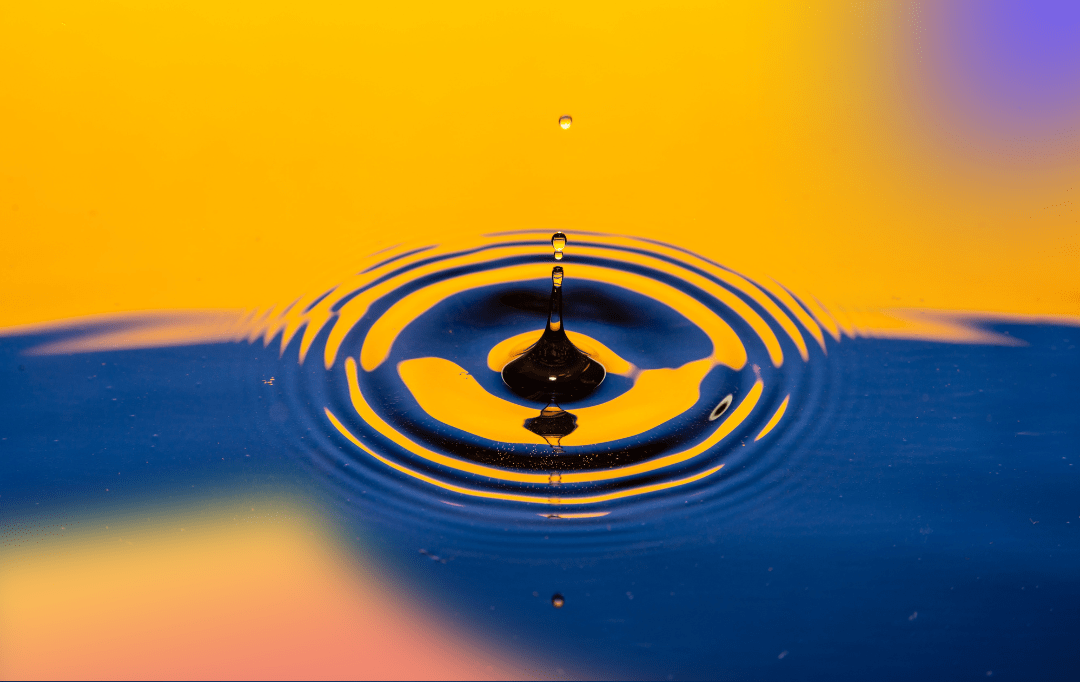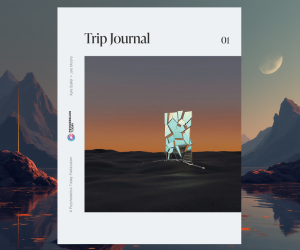By Jasmine Virdi
Undoubtedly, psychedelics are valuable tools for self-understanding, transformation, and healing, enabling us to peer into our inner workings and understand the world around us in new ways. By nature, psychedelics are destabilizing as they facilitate non-ordinary states of consciousness, catapulting us outside the bounds of our everyday perceptions. They heal us by disrupting our normative flow of consciousness leading to a multitude of insights ranging from the somatically strange to the mystically ineffable.
But, psychedelics and the realizations they enable will not necessarily change your life if you are not committed to working with the experience afterwards. This step is known as “psychedelic integration” and it involves chewing on our experiences, digesting any insights, and taking practical steps to implement those insights as positive change.
Psychedelic researchers and psychedelic-assisted psychotherapists have long considered integration a key component in psychedelic healing. In fact, they place major emphasis on post-experience “integrative follow-up sessions” as a scientific approach to aftercare. Many believe that integration protocols and strategies play a crucial role in positive long-term therapeutic outcomes, and some even argue that the value of integration is greater than the psychedelic sessions themselves.
What Does Psychedelic Integration Mean in Practical Terms?
Going on a psychedelic trip is a lot like physical travel. If you’ve ever gone backpacking or traveled for an extended period of time, you will know that returning home can often come as a major shock to the system, sometimes taking weeks—months, even—to re-adjust to our former lives.
Similar to travel, psychedelic experiences can also shift our perceptions about the world, pushing us outside our comfort zones and into self-realization. Returning to our regular work-life patterns can be psychologically jarring, as we find ourselves irrevocably changed whilst everything we left behind remains the same. Thus, reshaping our lives to mirror the inward changes we’ve undergone can be profoundly challenging.
The psychedelic experience produces a spectrum of insights, ranging from personal to transpersonal to ecological. Sometimes a person will gain a new perspective on who they are, shifting the landscape around their professional purpose, intimate relationships, and lifestyles.
Psychedelic integration, then, is the process of weaving the practical with the mystical, taking profound, ineffable experiences beyond the temporality of the psychedelic state and grounding them in our day-to-day lives in the form of enduring, positive changes.
In this sense, integration is an active, intentional process where an individual consciously reflects on their psychedelic experience and what it means for them personally. It involves exploring how insights can be translated into bite-sized actionable steps. The personal nature of integration means that an individual needs to find an authentic way of implementing their experience in a way that suits their unique needs and personality.
After an initial revelation, the experience, materials accessed, and insights gained can quickly fade into a dreamlike memory or become psychically compartmentalized, getting lost in the busy pulse of modern life. Thus, it is important to carve out time to consciously work with these experiences.
Integration and the Importance of Pre-Session Intention Setting
Preparation and pre-session intention setting are critical components to integration. Returning to the metaphor of travel, preparing for a psychedelic experience is likened to all the work that goes into preparing for a long-distance trip. We would never go to the airport to catch a flight without the basic essentials: passport, money, a bag with at least the bare necessities, and a destination.
Similarly, setting an intention is akin to having a destination. It can provide a grounding anchor in a psychedelic session, helping guide an individual and give them a lens through which to process insights that arrive post-trip. Integration is unique to each individual — it’s inextricably intertwined with their reason for using psychedelics in the first place.
In the cult classic, The Psychedelic Experience, former Harvard researchers Timothy Leary, Ralph Metzner, and Richard Alpert write: “In planning a session, the first question to be decided is ‘what is the goal?’” Whether your intention is to heal from a traumatic experience, overcome addiction, deepen your connection to nature, or examine a specific aspect of yourself, it is important to know what you’re aiming for.
According to clinical psychologist, psychedelic integration therapist and author of The Psychedelics Integration Handbook, Dr. Ryan Westrum, psychedelic integration is a continuous process similar to an infinity wheel in that “future stories will be cultivated, supported and benefitted if you are thinking about them prior.”
Another crucial element of preparation involves tending to your set and setting. “Set” generally refers to a person’s pre-session mindset. However, it can also include both immediate and long-range states of mind, covering everything from fears, hopes, and expectations about the session to personal history and enduring personality traits. The better the preparation, the more equipped an individual is to integrate their experiences.
The “setting” is the container of the experience. It factors into account when and where the experience will take place. In The Psychedelic Experience, the description of “setting” includes a temporal dimension, encouraging individuals planning for a psychedelic session to set aside up to three days to process their insights, so there’s “sufficient time for reflection and meditation.” The text cautions that returning to work too hastily will likely “blur the clarity of the vision and reduce the potential for learning.”
Similarly, Dr. Westrum advises:
“One could argue that the first hours and the days that immediately follow the psychedelic experience are the most crucial when it comes to integration. In general, our modern-day, contemporary lifestyles are so hectic, and we find ourselves constantly working, traveling and moving. It is important if you are considering taking a psychedelic, to take the proper time to do so, more appropriately thinking of it as a two-day experience. We need to carve essential time out to reflect and digest what happened, using the second day for purposes of integration.”
When considering healthy integration practices, it is essential for an individual to carve out the time and space needed for processing. Individuals are generally advised to avoid making any major life changes in the weeks that follow a psychedelic experience, and instead take time to rest, digest and distill insights before initiating dramatic changes.
Integration, Intuition and “Inner Healing Intelligence”
The concept of psychedelic integration is closely linked to “inner healing intelligence,” a notion originally developed by Stanislav Grof, and later refined by Michael Mithoefer, Clinical Investigator and Medical Director at the Multidisciplinary Association for Psychedelic Studies (MAPS).
The notion of “inner healing intelligence” is built on the premise that nature is intelligent by design. For example, when we injure ourselves physically, bruising a knee or cutting a finger, our body automatically initiates its own sophisticated healing process. Just like a seed contains within it all the knowledge to become a tree, humans have an innate capacity to heal when they are in the right environment. Similarly, the psyche has its own innate healing capacity to extend towards wholeness. In the integration process, individuals are encouraged to connect with their inner healing intelligence and take responsibility for mending.
The Emerging Field of Psychedelic Integration Therapy
With the psychedelic renaissance in full swing and the resurgence of research illuminating the therapeutic potential of hallucinogens, it’s no surprise that the public opinion of psychedelics is beginning to shift.
But, the stigma around psychedelics still exists. For this reason, individuals who undergo psychedelic experiences outside of a psychotherapeutic or clinical paradigm meet challenges upon reentering their day-to-day lives. The reason is that they usually have no one to openly share the experience with and no available resources to help sift through the intricacies of the trip.
Sometimes individuals need to reach out for professional support in order to digest the experience properly. Unfortunately, most mainstream therapists aren’t equipped to have a constructive conversation about psychedelics, however. As a result, many patients feel reluctant to talk about their experience for fear of being judged.
This gap in the mental health system paired with the growing public interest in psychedelics creates a higher demand for psychedelic therapists. As a result, the number of professional integration therapists, coaches, and specialists is increasing. The newly growing subdiscipline of psychedelic integration has risen to prominence, creating a bridge between traditional psychotherapeutic practice and the “psychedelic underground” in which the two cross-pollinate.
Many individuals who have not followed the institutional track to become an accredited mental health professional are emerging as practitioners within this space. But, what makes an individual qualified to be an integration expert? To an extent, it seems that a bona fide psychedelic experience takes greater precedence than formal certifications.
In choosing an integration therapist or coach to work with, integration expert Dr. Ryan Westrum expressed his concern over individuals falling into the wrong hands:
“Neo-integration therapists and coaches that don’t have a psychological background or a deep understanding of the world of consciousness scare me. There is beauty if calling something a ‘spiritual emergence,’ but if you start to recognize a person has suicidal ideation or chronic depression that didn’t break, you need healthy psychiatric and psychological support.”
He is careful to emphasize that beyond having the training to deal with such difficult scenarios, he believes “relationship is number one” and that ultimately “there needs to be a relationship established that feels safe, is psychedelic friendly, without judgment and is willing to hear where you need to go.”
Beyond psychotherapeutic and research paradigms, psychedelic integration is beginning to take root in the mainstream. Spanning across the US, there is now a variety of public integration circles emerging in the form of in-person and online groups. Psychedelic integration circles provide individuals who cannot afford therapy or private coaching a low-cost alternative. It gives them a judgment-free space to talk about their experience and provides access to a community that otherwise might not be there.
Recognizing the growing need for psychedelic literacy in mental health, Psychedelics Today founders, Kyle Buller and Joe Moore, created an online course “Navigating Psychedelics For Clinicians and Therapists” especially directed at healthcare professionals looking to deepen their knowledge of psychedelic research and to support their clients with psychedelic integration. The next eight-week online course is currently open for enrollment, scheduled to begin on May 7, 2020.
Is Integration Always Necessary?
I asked Dr. Westrum for his thoughts on the importance of integration after a psychedelic experience. Is it always necessary? He cautioned:
“It is never that you’re not taking enough medicine or not having enough experience. Rather, it is that you aren’t processing it appropriately. In 90% of cases, you look at people’s behaviors and lifestyles only to find they’re still stuck, they’re not taking what they are learning through psychedelic experiences and integrating it.”
It can be helpful to envision integration as existing on a spectrum or continuum. Four days of consecutive ayahuasca ceremonies will likely require more time for integration than a microdosing experience. Even if we feel that we don’t have anything that needs integrating, Dr. Westrum urges us to “at least process the experience at the level of ruling it out,” emphasizing that “everything deserves to be integrated into our lives.”
About the Author
Jasmine Virdi is a freelance writer, editor, and proofreader. She currently works for the fiercely independent publishing company Synergetic Press, where her passions for ecology, ethnobotany and psychoactive substances converge. Jasmine’s goal as an advocate for psychoactive substances is to raise awareness of the socio-historical context in which these substances emerged in order to help integrate them into our modern-day lives in a safe, grounded, and meaningful way.


